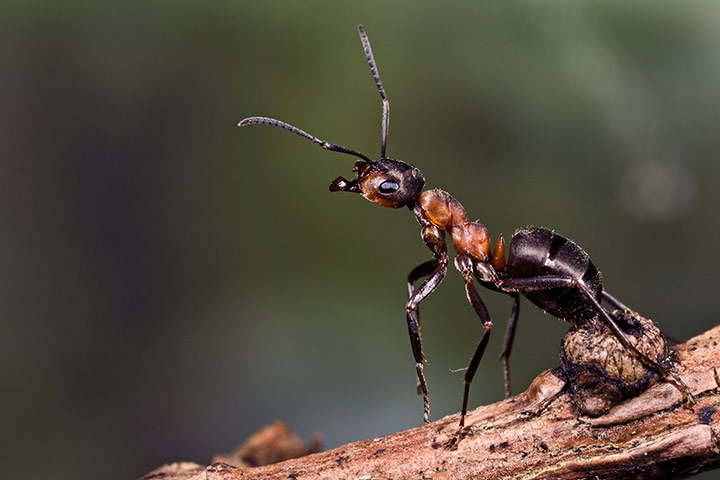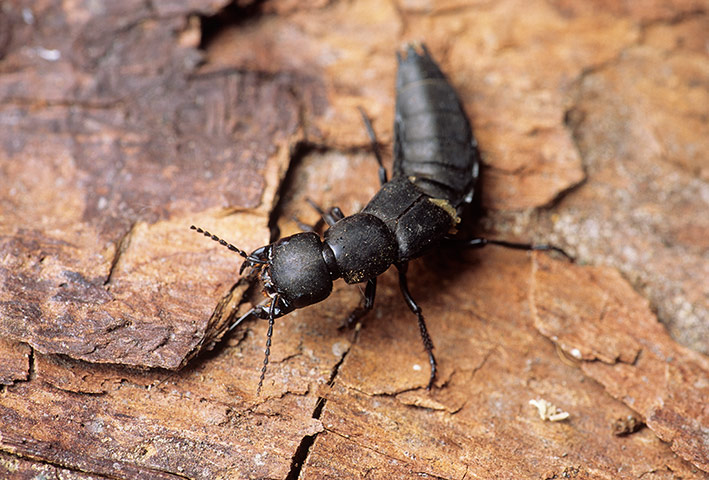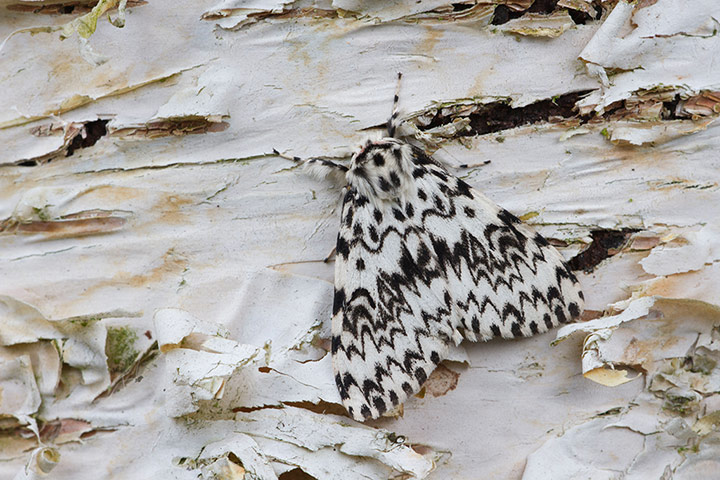
His majesty is an exquisite creature with iridescent wings that inhabits the canopy of deciduous woodlands in the south of England, such as Savernake Forest in Wiltshire. Sightings are therefore rare, except, that is, when the male descends to the ground to enjoy a meal of dung or carrion. Photograph: Rex

There’s a clue in the name indicating that, although these arachnids have fierce-looking appendages, they lack the stinging tail of a true scorpion. They’re also completely harmless to humans. Widely distributed in woodlands, false scorpions (there are 27 species in the UK) inhabit the litter layer and bark of trees. Photograph: Alamy

A large mound of needles and sand in a coniferous woodland such as Hamsterley Forest in County Durham could be a wood ant nest containing a few hundred thousand individuals. Some birds purposely agitate the inhabitants so the ants spray formic acid on their feathers – a pesticide that keeps mites at bay. Photograph: Alamy

Forget nectar and fruit, the speckled wood prefers to consume a sugary honeydew secreted by aphids. You’re most likely to come across this chocolate-brown butterfly with cream spots and a row of dark eye-spots in southern woodlands such as in Chambers Farm Wood, Lincolnshire. Photograph: Alamy

Brown, scallop-edged wings provide effective camouflage when hibernating in dead foliage, but, when active, the comma reveals its ginger upper sides that catch the eye as it flutters in clearings and along pathways. Having expanded its range, the comma now inhabits most of England, including northern woodlands such as Dalby Forest in Yorkshire. Photograph: Alamy

A prominent horn makes the rhinoceros beetle one of the most easily identifiable of all English coleoptera, though it’s no match for its more fierce-looking relative, the stag beetle. It’s found in woodlands throughout the country where it lives in dead wood. Try Cannock Chase in Staffordshire and West Wood, Wiltshire. Photograph: Alamy

Don’t overlook a brownish dragonfly skimming woodland ponds, particularly in the south of England between Dorset and Kent – the New Forest is a stronghold. If you’re lucky and see this scarce dragonfly land, you’ll notice its tail is a beautiful shimmering copper colour and its eyes a dazzling green. Photograph: Getty

This menacing-looking predator is every bit as ferocious as you might think. Its powerful jaws crush prey, and, when threatened, it raises the rear end of its abdomen like a scorpion and squirts a foul-smelling fluid at assailants. In damp woodlands, you may find it lurking under stones and broken boughs. Photograph: Science Photo Library

Found mainly in the south in woodlands such as the New Forest and Wyre, this striking invertebrate with extraordinary feathered antennae gets its name from the tiers of black arches zigzagged across its wings. During the day in spring, look out for black arches caterpillars, which feed on oak. Photograph: Alamy







